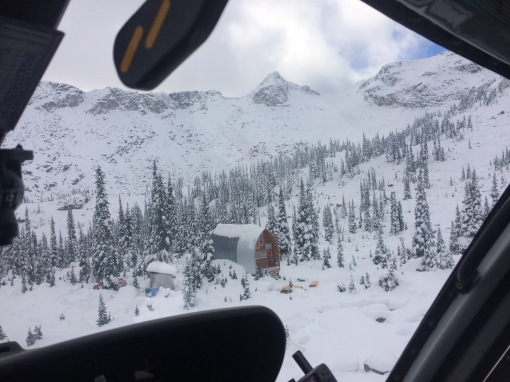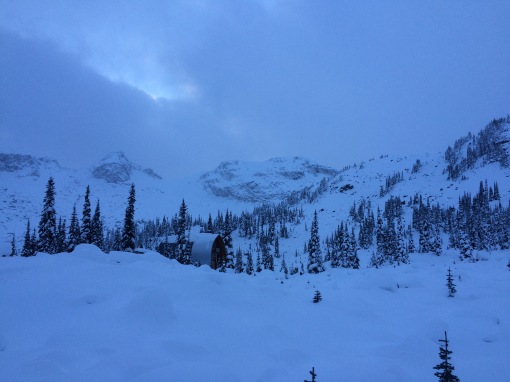This is an extended version of a short piece I wrote for the Winter 2012 issue of Mountain Life: Coast Mountains Magazine.
While legendary mountaineers Don & Phyllis Munday get well-deserved credit for exploring and publicizing Waddington’s exceptional alpine terrain, they were not the first to visit the central Coast Mountains’ great peaks and icefields. For decades prior to that fateful day in 1926 when Don and Phyllis first set their gaze upon “Mystery Mountain” dozens, if not hundreds of trappers and prospectors had been visiting the region hunting for resource riches. Because the mountains were the backdrop, rather than the object of their expeditions, however, and since these lonely bushmen were often as protective of their backcountry stashes as skiers are today, their extensive knowledge of the Coast Mountain landscape rarely left their lips, let alone made it into print.
Stanley Smith presents a remarkable and still little-known exception to this rule. In July 1893, accompanied by a Mr. Doolittle and two anonymous Squamish guides, Smith set off up the Squamish Valley in search of two freelance surveyors who had mysteriously disappeared the previous summer. All they found was a grey tweed cap and a burnt-out campsite near the head of the Elaho River. Undeterred and with little more than leather moccasins to protect their feet and a shotgun to ward off starvation, Smith and Doolittle continued northwards (at this point separated from the Squamish men).
According to Smith’s police report, from here they ascended massive icefalls unroped, dealt with heavy exposure while crimping along narrow rock ledges, crossed box canyons on logs suspended hundreds of feet above boiling rapids, and at one point stayed put for six days waiting out a severe case of snow-blindness. As most of the country through which they crossed was unmapped and unnamed, their exact route is unclear. Almost certainly, they crossed over major sections of the Lillooet Icefield, before finally descending from the ice one last time to find “rock formations and plant growth [that] showed we were on the eastern slope, and, in fact , it was only eight miles to Chilco Lake.”
Surviving on half rations, they took three days to carve out a canoe and descend the lake. Here the undoubtedly haggard duo were relieved to meet some Chilcotin men from whom they purchased provisions and fresh clothing to replace their now-tattered rags. Continuing on their way until they reached the empty cabin of Mr. Franklin, an acquaintance of Smith’s. From here they felled and carved out a second canoe, descended the treacherous Klinaklini River, and emerged at Knight Inlet where they hitched a ride on a coastal steamer back to a hero’s welcome at Vancouver, arriving on October 26th more than three months after having set out. No further traces of the lost surveyors were ever found.
Upon learning of this remarkable journey Don Munday, who at one point confidently claimed to be the first person to ever set foot on the great icefields of the region, wrote an incredulous article on Smith’s reconnaissance mission for the 1940 edition of the Canadian Alpine Journal. Equally shocking for Munday, who researched meticulously throughout his climbing career, was the fact that “mountaineering circles in British Columbia do not seem to have preserved even word-of-mouth knowledge of great glaciers discovered in 1893.”
Coverage in Victoria newspapers described Smith as “the well-known British Columbia explorer,” who already “had a great deal of experience in the unexplored parts of the province,” but provide sparse details about any forgotten feats he may have performed. No stranger to danger, a local Homalco chief found Smith’s corpse stuck in a log jam on the lower Homathko River in November 1895. Reports state that a partially legible diary was found in his pocket recording some of his mining claims and travel routes, but this little black book of Coast Range radness seems to be long gone.

Aerial view of the Stanley Smith Glacier, at the remote heart of the Lillooet Icefield. John Scurlock Photo
Smith’s obituary portrays a rather unique character. “A college-bred man, possessed of considerable means [with] rich parents living in the East,” Smith rejected his privilege and chose instead to live alone in a humble cabin on the outskirts of Vancouver, then barely a small town. Apparently Smith put his formal education to use by providing pro bono legal services for those of lesser means, turning his cabin into a “tramp’s court” like a nineteenth century Judge Brown of the Jungle. The article concludes “all who knew Stanley Smith here revered, respected and admired him as a man, while in his public character as an explorer, the province loses the valued assistance of one whom it will be almost impossible to replace.” Today the only monument to these epic adventures is the Stanley Smith Glacier near the remote heart of the Lillooet Icefield.






 A spectre is haunting North America’s grizzlies–the spectre of knuckleheads (as well as reckless industrialization, urban sprawl, highways, railroads, inert bureaucracies, and public apathy). Fortunately for grizzlies and their supporters, journalist and long-time wilderness advocate
A spectre is haunting North America’s grizzlies–the spectre of knuckleheads (as well as reckless industrialization, urban sprawl, highways, railroads, inert bureaucracies, and public apathy). Fortunately for grizzlies and their supporters, journalist and long-time wilderness advocate 































